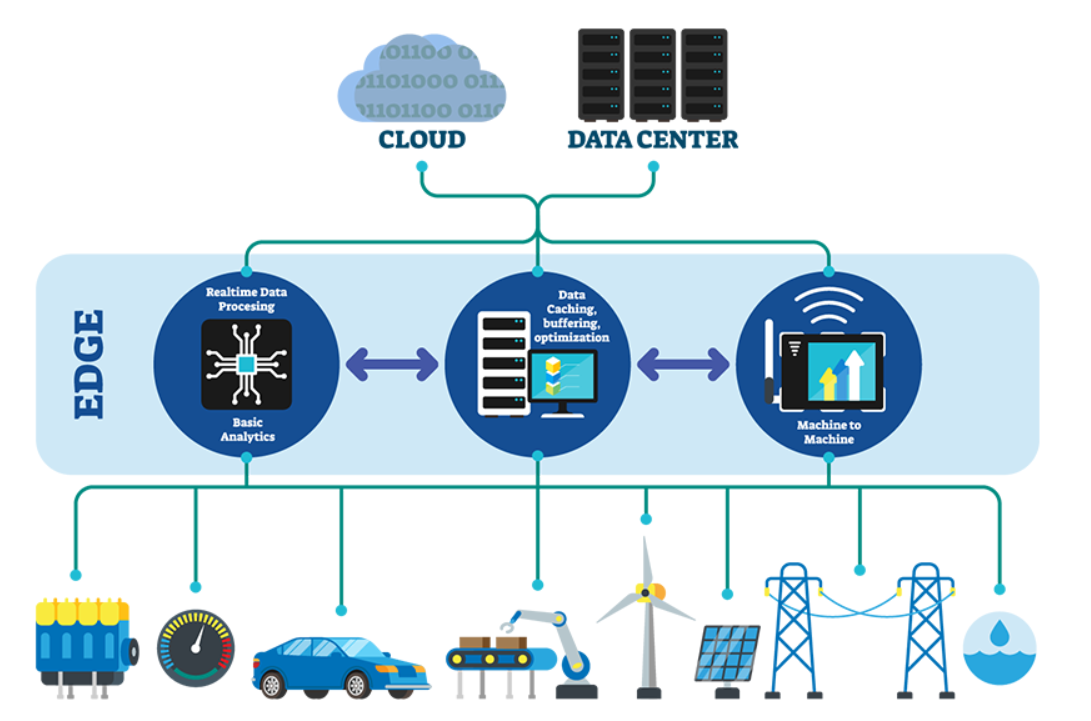What is Edge Computing?

Edge computing is a form of computing that is done on-site or near a particular data source, minimizing the need for data to be processed in a remote data center.
The evolution
The origins of edge computing are in the 1990s with the creation of the first content delivery network (CDN), which put data collecting nodes closer to end-users. But this technology was limited to images and videos, not massive workloads of data. In the 2000s, the increased shift to mobile and early smart devices increased the strain on existing IT infrastructure. Creations such as pervasive computing and peer-to-peer overlay networks sought to alleviate some of that strain.
However, it wasn’t until the mainstream application of cloud computing that true decentralization of IT began, giving end-users enterprise-level processing power with increased flexibility, on-demand scalability, and collaboration from anywhere in the world.
Yet, with more end-users demanding cloud-based applications and more businesses working from multiple locations, it became necessary to process more data outside of the data center right at the source and manage it from one central location. That’s when mobile edge computing became a reality.
Today, the “Era of IoT” is changing how businesses allocate IT for their business, making previously complex data collection less of an arduous task.
The potential of edge computing
Considering that IoT and edge computing are still in their relative infancy, their maximum potential is far from full realization. At the same time, they are already accelerating digital transformation across many verticals, as well as changing day-to-day lives around the world.
At a base level, edge computing streamlines how much data businesses and organizations can process at any given time, and as a result, they are learning more and uncovering insights at an incredible rate. With more detailed data from a variety of multi-access edge computing locations, businesses are better equipped to predict, manage, prepare, and adapt for future demands using historical and near-real-time data and scalable and flexible processing without the costs and constraints of older IT options.
The acceleration of data and convenience of edge computing is also the driving force behind many new and exciting technologies, from the faster and more powerful mobile devices, online collaboration, and faster and more exciting gaming, content creation, and transportation. The ongoing development of self-driving cars, in particular, is a prime example of edge computing in action, with driverless cars reacting and adapting in real-time instead of waiting for commands from a data center hundreds of miles away.
Edge computing use cases
Much of the technology we use today for entertainment and business, from content delivery systems and smart technology to gaming, 5G, or predictive maintenance, incorporate some form of edge computing technology.
Streaming music and video platforms, for example, often cache information to lower latency, offering more network flexibility when it comes to user traffic demands.
Manufacturers benefit from edge computing by keeping a closer eye on their operations. Edge computing enables companies to closely monitor equipment and production lines for efficiency and, in some cases, detect failures before they happen, helping avoid costly delays due to downtime. Similarly, you can also see edge computing being used in healthcare to look after patients, giving physicians more real-time insight into people’s health without the need to send their information to a third-party database for processing. Elsewhere, oil and gas companies can keep watch on their assets and avoid costly complications.
Smart home construction uses edge computing solutions as well. More and more devices need to communicate and process data in a localized network, especially devices like voice assistants. Without the help of decentralized processing power, Amazon Alexa and Google Assistant would take far more time to find requested answers for users.
HPE and edge computing
HPE analysts believe that by 2022, 75 percent of enterprise-generated data will be created and processed outside the traditional centralized data center or cloud.
HPE is dedicated to helping enterprises across many industries explore and unlock these capabilities, working with companies and organizations alike, such as Purdue University, various healthcare networks, leading telecommunication companies, and even sports teams like Tottenham Hotspur. These projects range from enabling a more seamless healthcare experience to creating a faster, more intelligent packaging plant to helping a notable chemical manufacturer transition from a legacy infrastructure into one primed to deliver data-driven insights.
HPE offers a multitude of edge computing products and services, including Aruba ESP and HPE Edgeline. Aruba ESP helps companies improve their operational agility, lower risk, increase revenue, add mobility, and increase productivity, while HPE Edgeline provides the enterprise-grade compute and processing power to make those solutions possible. In addition, HPE has the experience needed to manage and support these initiatives, enabling clients to focus on innovations of their own making.
